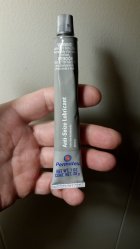JMayo
Silver $$ Contributor
@Dusty Stevens
Is this not good ?
Says " highly refined blend of aluminum, copper and graphite lubricants. Use during assembly to prevent galling, corrosion and seizing due to weathering or chemicals. Anti-Seize assures easier disassembly. Temperature range: -60°F to 1600°F (-51°C to 871°C). Salt, corrosion and moisture resistant"
Is this not good ?
Says " highly refined blend of aluminum, copper and graphite lubricants. Use during assembly to prevent galling, corrosion and seizing due to weathering or chemicals. Anti-Seize assures easier disassembly. Temperature range: -60°F to 1600°F (-51°C to 871°C). Salt, corrosion and moisture resistant"












